Films with theme "Documentary films about films", sorted by revenue
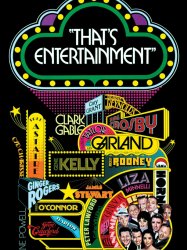
That's Entertainment! (1974)
, 2h15Directed by Jack Haley Jr.
Origin USA
Genres Documentary, Musical
Themes Films about films, Films about music and musicians, Documentary films about business, Documentary films about the film industry, Documentary films about cities, Musical films, Documentary films about films
Actors Frank Sinatra, Fred Astaire, Bing Crosby, Gene Kelly, Peter Lawford, Liza Minnelli
Cette nostalgique leçon d'histoire recèle les trésors cachés des plus grandes comédies musicales de la MGM ainsi que de nombreux autres extraits merveilleux mais moins célèbres, avec Esther Williams, Jimmy Durante, Eleanor Powell et même Clark Gable chantant et dansant. « Il était une fois Hollywood » est une véritable gourmandise pour cinéphiles et amateurs de comédies musicales.
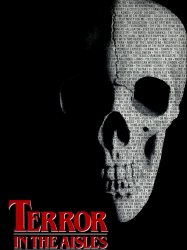
Terror in the Aisles (1984)
, 1h24Origin USA
Genres Thriller, Fantastic, Documentary, Anthology film, Horror
Themes Films about films, Documentary films about business, Documentary films about the film industry, Documentary films about films
Actors Donald Pleasence, Nancy Allen, Bud Abbott, Michael Ironside, Fred Asparagus, Brooke Adams
Director Andrew J. Kuehn has excerpted brief segments of terror and suspense in a wide variety of suspenseful (including humorously so, ex. Abbott & Costello Meet Frankenstein, Saturday the 14th) films and strung them together with added commentary, as well as some enacted narrative, to create a compilation of fright-inducing effects. Halloween actor Donald Pleasence and Dressed to Kill star Nancy Allen provide the commentary on topics such as "sex and terror" (Dressed to Kill, Klute, Ms. 45, The Seduction, When a Stranger Calls), loathsome villains (Dracula, Frankenstein, Friday the 13 1 and/or 2, Halloween I and II, Marathon Man, Nighthawks, The Texas Chain Saw Massacre, Touch of Evil, Vice Squad, Wait Until Dark, What Ever Happened to Baby Jane?), "natural terror" (Alligator, The Birds, Frogs, Jaws 1 and 2, Nightwing) and the occult (An American Werewolf in London, Rosemary's Baby, The Exorcist, The Omen, Carrie, The Shining). In one segment of the anthology, legendary filmmaker Alfred Hitchcock presents his concepts of how to create suspense in a clip from Alfred Hitchcock: Men Who Made The Movies.
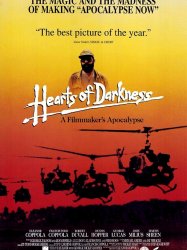 , 1h36
, 1h36Directed by Eleanor Coppola, George Hickenlooper
Origin USA
Genres Documentary
Themes Films about films, Documentary films about business, Documentary films about the film industry, Political films, Documentary films about films
Actors Francis Ford Coppola, Marlon Brando, John Milius, Eleanor Coppola, Orson Welles, Sofia Coppola
The title is derived from the source material for Apocalypse Now, the Joseph Conrad novella Heart of Darkness. Using behind-the-scenes footage, and narrated by Eleanor Coppola, it chronicles how production problems including bad weather, actors' health and other issues delayed the film, increasing costs and nearly destroying the life and career of Francis Ford Coppola. In 1990, Eleanor Coppola turned her material over to two young filmmakers, George Hickenlooper and Fax Bahr (co-creator of MADtv), who then shot new interviews with the original cast and crew and intercut them with her existing material. After a year of editing, Hickenlooper, Bahr, and Coppola debuted their film at the 1991 Cannes Film Festival to universal critical acclaim.

American Movie (1999)
, 1h47Directed by Chris Smith
Origin USA
Genres Comedy, Documentary
Themes Films about films, Documentary films about business, Documentary films about the film industry, Documentary films about films
Actors Mark Borchardt, Mike Schank
In 1996, Mark Borchardt, a blue-collar suburbanite, dreams of being a filmmaker. However, he is also an unemployed, deeply indebted, borderline alcoholic who still lives with his parents and is estranged from his ex-girlfriend, who is threatening to revoke custody of their three children. He acknowledges his various failures but aspires to one day make more of his life.
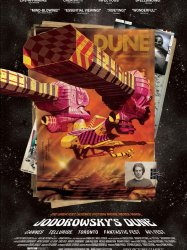
Jodorowsky's Dune (2013)
, 1h30Origin USA
Genres Drama, Documentary
Themes Films about films, Documentary films about business, Documentary films about the film industry, Documentary films about films
Actors Alejandro Jodorowsky, Michel Seydoux, Nicolas Winding Refn, Brontis Jodorowsky, Amanda Lear, Richard Stanley
Au début des années 1970, après les succès en Europe des films El Topo et La Montagne sacrée, le producteur français Michel Seydoux propose au réalisateur Alejandro Jodorowsky de produire son prochain film, lui laissant carte blanche. Jodorowsky se lance alors dans son projet le plus ambitieux : l'adaptation du roman Dune de Frank Herbert, qu'il n'a pas lu au départ, donnant par hasard le nom de cette œuvre à Seydoux car il en a entendu du bien par un ami. Mais, stimulé par le roman, il souhaite en faire une expérience spirituelle qui changera la vision des spectateurs, ce projet devenant pour lui un idéal mystique et conceptuel, du fait notamment de la présence dans le roman de l'épice, qu'il relie avec les excès de son époque (utilisation du LSD par les hippies, etc.).
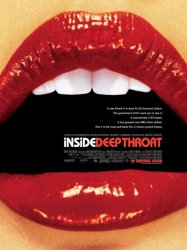
Inside Deep Throat (2005)
, 1h31Origin USA
Genres Documentary, Historical, Pornographic
Themes Films about films, Politique, Films about sexuality, Films about pornography, Documentary films about business, Documentary films about the film industry, Political films, Documentary films about films
Actors Dennis Hopper, Peter Bart, Warren Beatty, John Waters, Tony Bill, Gore Vidal
Considéré comme le film le plus rentable de tous les temps, Gorge profonde fut bien plus qu'une curiosité pour adultes et une réussite financière. Sorti en 1972, au moment où les Etats-Unis découvraient les mouvements pour la libération sexuelle et les valeurs de la contre-culture, ce film au contenu sexuellement explicite déclencha une tempête sociale et politique sans précédent. Gorge profonde devint un phénomène culturel majeur, dont l'impact se ressent encore aujourd'hui. Plus de trente ans après les scandales provoqués par ce classique du cinéma porno, le documentaire Inside Deep throat examine l'incroyable abîme entre les modestes intentions des créateurs du film et l'héritage qu'ils ont involontairement laissé.
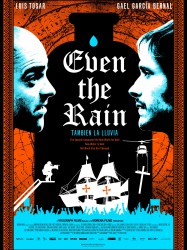
Even the Rain (2011)
, 1h43Directed by Icíar Bollaín
Origin Espagne
Genres Drama, Historical
Themes Films about films, Documentary films about business, Documentary films about the film industry, Documentary films about films, Indiens d'Amazonie
Actors Gael García Bernal, Luis Tosar, Raúl Arévalo, Najwa Nimri, Karra Elejalde, Juan Carlos Aduviri
Mexican filmmaker Sebastián (Gael García Bernal) and his executive producer Costa (Luis Tosar) arrive in Cochabamba, Bolivia, accompanied by a cast and crew, prepared to create a film depicting Columbus's first voyage to the New World, the imposition of Columbus’ will upon the natives, and the subsequent indigenous rebellion. Cognizant of his limited budget, producer Costa elects to film in Bolivia, the poorest country in South America. There, impoverished locals are thrilled to earn just two dollars a day as extras in the film, and willingly engage in physical labor for set preparation. Costa saves many thousands of dollars by having underpaid extras perform tasks meant to be completed by experienced engineers.
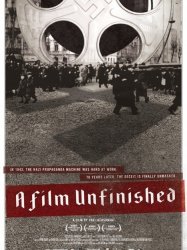
A Film Unfinished (2010)
, 1h29Origin Israel
Genres Documentary, Historical
Themes Films about films, Films about racism, Films about religion, Documentary films about business, Documentary films about the film industry, Documentary films about racism, Documentary films about law, Documentary films about war, Documentary films about historical events, Documentaire sur une personnalité, Documentary films about religion, Political films, Films about Jews and Judaism, Documentary films about World War II, Documentary films about films
Actors Alexander Beyer, Rüdiger Vogler
Ce sont des séries de bobines de films de 35 mm allemandes, anonymes, sans générique, portant la seule inscription : Das Ghetto, retrouvées dans les années 1950 qui sont à l'origine du film de Yahel Hersonski. Ces bobines constituent un « documentaire » allemand sur le ghetto de Varsovie durant la Seconde Guerre mondiale. Dans les années 1990, la découverte d'une bobine manquante viendra éclairer la propagande qui se cachait dans les premières images retrouvées et le véritable but des Allemands qui réalisèrent ces images.
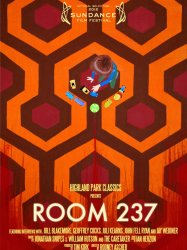
Room 237 (2012)
, 1h42Origin USA
Genres Documentary
Themes Films about films, Documentary films about business, Documentary films about the film industry, Documentary films about films
Actors Tom Cruise, Jack Nicholson, Stephen King, Nicole Kidman, Liam Neeson
The film interviews fans of The Shining who, using their own brands of film analysis, connect Kubrick's film with (among others) genocide of Native Americans, the Holocaust, and the Apollo 11 moon landing. The interviewees are not seen in Room 237, but rather, their commentaries and claims about the film are heard over a variety of visual clips (primarily from the film The Shining itself) which loosely connect with their dialogue.
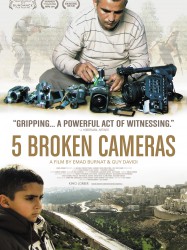
5 Broken Cameras (2011)
, 1h34Origin Israel
Genres Drama, War, Documentary, Crime
Themes Films set in Africa, Films about films, Films about religion, Documentary films about business, Documentary films about the film industry, Documentary films about law, Documentary films about war, Documentary films about historical events, Documentaire sur une personnalité, Documentary films about politics, Documentary films about religion, Political films, Films about Jews and Judaism, Documentary films about films
There are five cameras — each with its own story. When his fourth son, Gibreel, is born in 2005, self-taught cameraman Emad Burnat, a Palestinian villager, gets his first camera. At the same time in his village of Bil’in, the Israelis begin bulldozing village olive groves to build a barrier to separate Bil'in from the Jewish Settlement Modi'in Illit. The barrier's route cuts off 60% of Bil'in farmland and the villagers resist this seizure of more of their land by the settlers.
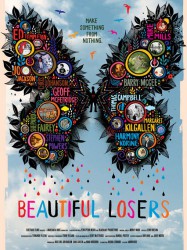
Beautiful Losers (2008)
, 1h29Directed by Joshua Leonard, Aaron Rose
Origin USA
Genres Documentary
Themes Films about films, Documentary films about business, Documentary films about the visual arts, Documentary films about the film industry, Documentaire sur une personnalité, Documentary films about films
Actors Harmony Korine, Mike Mills, Aaron Rose
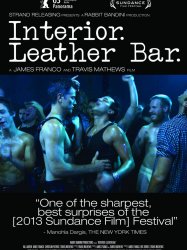
Interior. Leather Bar. (2013)
, 1hDirected by James Franco, Travis Mathews
Origin USA
Genres Drama, Documentary
Themes Films about films, Films about sexuality, LGBT-related films, Documentary films about business, Documentary films about the film industry, Documentaire sur l'homosexualité, Documentary films about films, LGBT-related films, LGBT-related film
Actors James Franco, Brenden Shucart, Michael Lannan, Travis Mathews, Joel Michaely
Le film présente James Franco et Travis Mathews dans leur propre rôle, travaillant ensemble sur un projet de film dont le but est d'imaginer et de recréer les 40 minutes du film La Chasse sorti en 1980, contenant des scènes à caractère sexuel explicite, qui avaient alors été censurées et supprimées. Les autres acteurs présents à l'écrans sont Val Lauren, Christian Patrick, Brenden Gregory, Brad Roberge, Colin Chavez et A.J. Goodrich.

You All Are Captains (2010)
, 1h19Directed by Oliver Laxe
Origin Espagne
Genres Documentary
Themes Films about children, Documentary films about business, Documentary films about the film industry, Documentaire sur une personnalité, Documentary films about films
Actors Oliver Laxe
A European filmmaker is making a movie with children living in a foster home for socially excluded youngsters in Tangier, Morocco. While filming, the director's unorthodox methods of working cause his relationship with the children to disintegrate to such a point that the initial course of the project is altered.
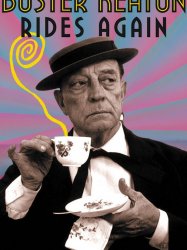
Buster Keaton Rides Again (1965)
, 55minutesDirected by Gerald Potterton
Origin Canada
Genres Biography, Documentary
Themes Films about films, Films about television, Transport films, Rail transport films, Documentary films about business, Documentary films about the film industry, Documentaire sur une personnalité, Documentary films about technology, Documentary films about films
Actors Buster Keaton, Gerald Potterton
Avec Buster Keaton est un documentaire de 1965 sur le tournage du film The Railrodder (avec Buster Keaton), également tourné en 1965. Bien qu'il ne s'agisse que d'un documentaire de production, ce film est en fait plus long que The Railrodder, qui ne dure que 24 minutes. Les deux films ont été produits par l'Office national du film du Canada. Avec Buster Keaton montre des extraits de précédents films de Keaton, Butcher Boy (1917), The frozen north (1922), Seven Chances (1925), et le mécano de la Générale (1927). Le film a été réalisé par John Spotton et narré par Michael Kane.
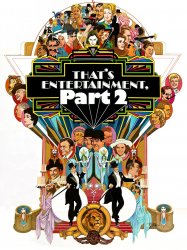 , 2h13
, 2h13Directed by Gene Kelly
Origin USA
Genres Documentary, Musical
Themes Films about films, Films about music and musicians, Documentary films about business, Documentary films about the film industry, Documentary films about cities, Musical films, Documentary films about films
Actors Fred Astaire, Gene Kelly, Bud Abbott, Lou Costello, Lew Ayres, Stan Laurel
Gene Kelly et Fred Astaire présentent les meilleurs moments des films de la MGM.
 Connection
Connection